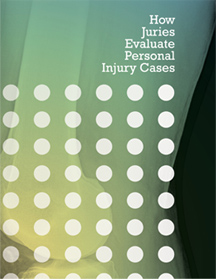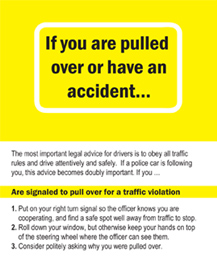Common abbreviations used in personal injury medical records
Medical records play a critical role in every personal injury case. You may find, however, that you have trouble deciphering the information contained in your medical records because doctors, nurses and other medical professionals speak in a shorthand language all their own. Medical records are replete with abbreviations, many of which have no real connection to the English language words they purport to abbreviate. For example, “c” is an abbreviation of the Latin word “cum,” which means “with.” The word “with” is also abbreviated as “w/,” sometimes in the same paragraph as “c.” Two other “c” abbreviations that you will see often are “cc” and “c/o.” “CC” means “chief complaint,” which often is the doctor’s conclusion as to the patient’s main problem; “c/o,” on the other hand, means “complains of,” which is a statement reciting what the patient told the doctor about the patient’s ailments. Unless you and your personal injury lawyer know a number of medical abbreviations, you are likely to miss an important point in your medical records, or possibly even an error in your medical records, that may be helpful in proving your injury claim.
Eight essential medical abbreviations to know in a personal injury case
You and your personal injury lawyer must recognize the following eight abbreviations, or you run the risk of being unpleasantly surprised by the defense in your injury accident lawsuit. For example, a smart injury lawyer knows that “BP > normal” does not mean “normal blood pressure, and that “ETOH” means his client had been drinking before the accident.
AMA against medical advice
DNKA did not keep appointment
ETOH ethyl alcohol [indicates liquor consumption]
GSW gunshot wound
N.A.D. no acute distress
OD overdose
STD sexually transmitted disease
> greater than
< less than
Other abbreviations that commonly appear in personal injury medical records
Keep this list of common abbreviations close at hand when you review your medical records:
abd abdomen or abdominal
ad lib as much as needed or desired
ADL activities of daily living
adm admission
a/o alert and orientated
ASA aspirin
BCP birth control pills
BE barium enema
bid. two times a day
b.i.d. two times a day
BK below the knee
BM bowel movement
BP blood pressure
BR bed rest – or bathroom
c with
CAT Computerized Axial Tomography
CBC complete blood count
CC – or cc chief complaint
CICU coronary intensive care unit
CNS central nervous system
c/o complains of
cpd compound
CPR cardiopulmonary resuscitation
c-spine cervical spine
CT CAT scan
CXR chest X-ray
d/c discontinue
D/C – or dc discharge
DTR deep tendon reflexes
dx diagnosis
EBL estimated blood loss
ECG electrocardiogram
EDC estimated date of confinement
EEG electroencephalogram
EKG electrocardiogram
EMS emergency medical service
ER emergency room
Fem femoral
FH family history
FHR fetal heart rate
FHx family history
fu – or F/U follow up
Fx fracture
Fx dis fracture dislocation
GP general practitioner
H&P history and physical
HA – or h/a headache
HBP high blood pressure
HEENT head, ears, eyes, nose, throat
HPI history of present illness
hr hour
HR heart rate
Hx history
I&D incision and drainage
ICU intensive care unit
ICCU intensive coronary-care unit
IM intramuscular
IV intravenous
KLS kidney, liver, spleen
L left
L lumbar
Lab laboratory
LE’s lower extremities
LOC level of consciousness — or loss of consciousness
M.E. medical examiner
MAE moving all extremities
MICU medical intensive care unit – or mobile intensive care unit
MVA motor vehicle accident
NEU neurological
NKA no known allergies
nl normal limits
NS neurosurgery
N/V nausea and vomiting
N&V nausea and vomiting
N/V/D nausea, vomiting, diarrhea
O.D. right eye
O.S. left eye
O.U. both eyes
OA osteoarthritis
Occ occasional
OR operating room
ORIF open reduction & internal fixation
Ortho orthopedic
OT occupational therapy
O/T occupational therapy
PE physical examination
PG pregnant
PH past history
PI present illness
PMH prior medical history
po by mouth
P.O. phone order
post-op post operative, pre-op, pre-operative
PRN as required or as needed
pt patient
PT physical therapy
PTA prior to admission
PX prognosis
q.d. every day
q.h. every hour
qid or q.i.d. 4 times a day
R right
RN registered nurse
R/O rule out
ROM range of motion
RR recovery room
s without
SLR straight leg raising
S/P status post
STAT immediately
surg surgery
SX symptoms
tid or t.i.d. 3 times a day
TMJ temporomandibular joint
TPR temperature, pulse, and respiration
TX or Tx treatment
Ua urinalysis
U.E.’s upper extremities
V.O. verbal order
W white
w/ with
WNLl within normal limits



